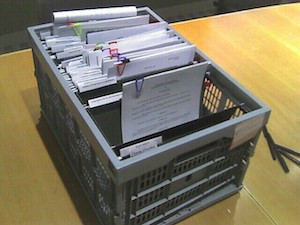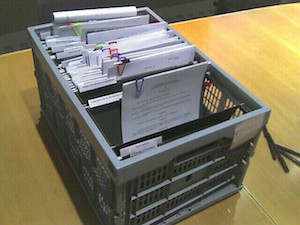 Sudden death impacts young and old, rich and poor, family, friends, colleagues and strangers any time, any place. Suddenly, you have financial, legal and logistical hurdles to get past, in addition to the immediate and longer-term grieving process.
Sudden death impacts young and old, rich and poor, family, friends, colleagues and strangers any time, any place. Suddenly, you have financial, legal and logistical hurdles to get past, in addition to the immediate and longer-term grieving process.
First, prioritize your action plan steps and create a family contingency plan for sudden death. By creating an action plan and breaking it into small steps, you give yourself permission to start wherever you are, to take one step at a time, and to measure your progress incrementally.
One important part of a sudden death action plan is to gather facts about assets and liabilities. Waiting to gather those facts until a loved one dies means that you may make important decisions in a vacuum. Those decisions, if poorly made, may have high (and often unnecessary) financial, legal, emotional and relationship costs.
It’s all in the details
Include the following and add whatever others you like. Define “family” to include any or all of the following as they pertain to your life: you, your spouse or partner, your children, their children, your parents, your in-laws, your siblings and their families.
Wills, Trusts and Guardianships
Where is the original of each? When was it last updated? Who is the personal representative, executor, trustee or guardian? Does that person know the contents of the document? Has that person agreed to serve in this role? Do you and this person understand the legal and financial responsibilities involved?
Insurance Policies
Include your family’s health, life, disability, long-term care, home, vehicle, umbrella liability, mortgage or credit card, accidental death and/or professional or directors and officers’ liability policies. Do you know where the actual policy is? What is the policy number? Who is the agent? What is the contact number for the agent or the insurance company? Who are the beneficiaries of any life insurance policies? Are there exclusions in the life insurance policies for suicide, acts of God or terrorist acts?
Investment Assets
Include personal stock portfolios, IRAs, 401ks and any other work-related assets like ESOPs, corporate or partnership shares. Who is the broker, program manager, asset manager or wealth management adviser, if any? What is that person’s contact information, i.e. phone, e-mail, mailing address? Where are stock certificates, bearer bonds or other “proof-of-ownership” documents kept? Are there assigned beneficiaries for any of these assets?
Bank Accounts
Include checking, savings, money market, line-of-credit and credit card accounts. List account numbers and bank contact information. Do the accounts have co-signers? If so, who? If not, will the family have trouble paying the bills in the short-term if they can’t access those accounts? When are relevant payment due dates for credit card balances and line-of-credit? Where are statements sent? Where and how long are bank records kept?
Safe Deposit Boxes
Where are the boxes located? Where are the keys located? Are there co-signers who can access the boxes? What is kept in the boxes? Note that it may not be wise to keep the original will in a safe deposit box if there are no co-signers and no one knows it’s there.
Home and Vehicle Titles
Where are the titles kept? Are there mortgages or loans? If so, what are the mortgage and loan account numbers? When are payments due?
Death
Is there a pre-paid burial plan or plot? Where is the documentation? Who is the contact person? How many official death certificates do you need to request? How do you do that? What do you do if the body is not recovered? What were the deceased’s wishes about a memorial service or funeral?
Contact Information for Trusted Advisers
Include attorneys, accountants, financial advisers, pastors, priests or rabbis, grief counselors, preferred funeral home contact.
If that information is stored on a computer hard drive, someone besides the deceased needs to know the password. And ensure it is stored in a safe place that computer hackers can’t access. It helps to create a header or footer for documents that contain the file names and when they were last updated. Store a back-up of the files off-site in a safe, accessible place.
Where to start?
Separate the above questions into three categories:
- Questions you can’t answer because you don’t have enough information.
- Questions you can answer that highlight the need for corrective action.
- Questions you’ve addressed but haven’t shared with loved ones or advisers.
- In each of these categories, prioritize your questions and action steps. Identify resources you need to move forward and list the activities that help you prepare for sudden death.
This article is adapted from material in Sudden Death: A Fire Drill for Building Strength and Flexibility in Families (TDI Press, 2004). Written By Bonnie M. Brown, Ph.D.
